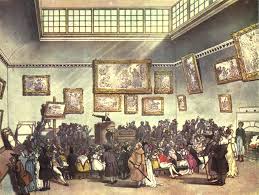 We had a cannabis first over the weekend, when Fireweed Farms out of Prosser hosted the first wholesale marijuana auction. Three hundred pounds of marijuana were sold to processors and retailers for approximately $600,000.
We had a cannabis first over the weekend, when Fireweed Farms out of Prosser hosted the first wholesale marijuana auction. Three hundred pounds of marijuana were sold to processors and retailers for approximately $600,000.
This auction brings up all sorts of questions industry stakeholders have been asking. Will the marijuana market in 5 years look more like the wine market or more like the agricultural commodities market? Will prices come down as greater volumes of cannabis hit the market? Do auctions skew toward higher or lower prices than standard one-to-one transactions? One auction in Prosser isn’t enough to draw any conclusions, but it is as good a reason as any to start considering some of the ins and outs of running auctions in the marijuana space.
When thinking about the effects of auctions, we should first consider the alternatives. Auctions are one of three main ways to price products, the other two being price-listing (take it or leave it sales) and private treaty (price privately negotiated between buyer and seller). To date, the majority of wholesale transactions in the legalized marijuana industry have been by private treaty, though more and more producers have been listing prices on their website as fixed prices.
Auctions themselves can be run in several different ways. Traditional English auctions are what typically first come to mind. In an English auction, the price starts low and bidders competitively agree to higher and higher prices until no one is willing to outbid the highest standing bid. Less used in the United States are Dutch auctions, where the initial price starts out really high, and the auctioneer progressively lowers the price, until the first bidder says yes to a given price and gets the item. Converging bid auctions are how the Chicago commodities exchanges and the New York Stock Exchange were traditionally run, where buyers and sellers basically shout prices at one another until they reach an agreement. Each of these choices can have some effect on the final price outcome. Determining which auction method produces better outcomes (and for whom) is an interesting question, with a lot of literature on the topic, including Myerson’s seminal work on auction theory, which will terrify anyone who got into marijuana production because they didn’t like math.
In addition to how they are run, there are two main types of auctions: those “with reserve” and those “without reserve.” Auctions with reserve are those where the seller reserves the right to accept or reject the high bid or reserves other rights in the terms and conditions of the auction. An auction without reserve — also known as an “absolute auction” — is one where the seller does not reserve these rights, including the right to withdraw the product on which they are bidding.
Legally, auctions for goods are governed by the Uniform Commercial Code. No surprises there, except that sellers need to know that, if they are running an auction without reserve, they are not allowed to bid on their own product in an effort to drive up the price. If the seller does this, the buyer could potentially get the product for the price of the highest bid before the seller bids on the product.
Back to the Prosser cannabis auction. That auction seems to have delivered a price point quite a bit lower than the owner’s target, which he stated as $1,000,000. This lower than desired price may have been due to the quality of the product or to how the auction was run, but it is more likely that it was because it is hard to get enough buyers at an auction in Prosser to sufficiently bid up the price of 300 pounds of marijuana product. Additionally, the buyers were in two very distinct categories, as both retailers and processors were there to bid. For processors, $3.00 per gram is a price that works well and is relatively fair. For retailers, $3.00 per gram at wholesale would be a tremendous bargain. It would be interesting to gauge whether the prices would have turned out different had two different auctions been held, one for the processors and one for the retailers. Because buyers were not actually sampling the product on which they were bidding, the auction had much more of the feel of a commodities auction than one for craft consumables. This attitude may have also kept prices relatively low.
Do we have any conclusions at this point? In short, no. There are too many variables at play to glean anything lasting from one auction, though it is a useful data point. The great cannabis legalization experiment continues and we look forward to watching the industry develop in whatever direction that takes us. I, for one, look forward to the day that reporters of marijuana business news cease feeling the need to use mildly patronizing quotes from regulators praising a cannabis event for being well-organized and not being a circus.























